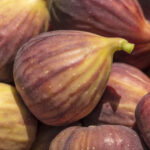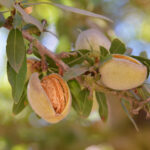U.S.: Limited supply of club grape varieties 'angering retailers', says Pandol Bros

A leading California table grape grower believes the industry focus on proprietary varieties is beginning to fade, as retailers become increasingly frustrated by the limited supply availability.
Pandol Bros special projects director John Pandol also said the current season had seen good demand, yields and prices, and expected volumes to dwindle earlier than in the last two years. 
According to the representative, many retailers are still 'trying to figure out what to do' with the plethora of new varieties and are struggling to adapt to the industry changes experienced over recent years.
"Up until 10 years ago, two varieties [Thompson Seedless and Red Globe] were half of our volumes, and now our biggest variety is probably 15%," he told www.freshfruitportal.com.
He criticized the 'club approach' in the table grape industry, saying a variety name was 'no magic' and at the end of the day it was the characteristics like color, texture and flavor that mattered.
"They’re focusing on the characteristics, and often they find out that a traditional variety is better than a new variety and the public varieties are better than the proprietary varieties," he said.
"I think that the limited varieties are really starting to anger a lot of retailers. I’ve been out on shows and if a variety is good, there’s never enough of it."
"If it has good characteristics then it doesn’t matter if it's new or old, public or proprietary."
Pandol also explained how it was likely that many exclusive cultivars produced by a limited number of growers would fail in the end.
"We have a variety called Sugar Crunch and really it had been overlooked and abandoned in a variety block, and my brother asked for three cuttings of it and actually made it quite successful," he said.
"It’s been identified as a defect in the club system that a variety, especially a proprietary one, goes out to one or a very small group of growers, and so what sometimes happens is they don’t figure out how to make that variety successful.
"It’s not like the days of the Flame Seedless that went out to hundreds of growers, and so best practices kind of emerged. If a variety is not in the hands of many growers, they don’t reach their full potential."
Strong dollar has minimal effect on exports
The Golden State's table grape production for the season is expected to end at in the range of 115-118 million boxes, which would put it around 4% higher than the previous two deals but similar to 2013-14.
Approximately half of the total crop has been harvested so far and 40% shipped, according to Pandol.
Despite the small rise in volumes, he believed shipments would wind down a bit earlier than last year.
He had also been surprised at the marginal effect the strengthening U.S. dollar has had on exports to two major markets.
"We expected our export business to really drop due to exchange rates with our two biggest export markets, Canada and Mexico," he said.
"But we really have not seen that much of a drop in business, with the currency being maybe 30% more unfavorable that two years ago. It's really not all that noticeable."
Canada and Mexico receive around 10% and 5% of the crop respectively, with 60% sold domestically and a further 25% going to other export markets.
Chile 'abandoning super-early strategy'
Looking further ahead at the transition to Southern Hemisphere supplies, Pandol said the timings would likely return to normal, after they were brought forward last year due to concerns over the impacts of a weather phenomenon.
"Last year was supposed to be a big El Niño year and a lot of folks in Peru forced their production earlier...but then El Niño really didn’t materlialize," he said.
"I think we will return to the normal harvest pattern of prior years, and I don’t see them in the future trying to be get into the market here in October and November."
He added Peru's southern neighbor Chile had all but abandoned its 'super-early strategy', saying there was 'more risk than reward'.
"You do very aggressive things to get early and then you’re against California production. Even in areas like Mexico the super-early strategy guys have gone out of business," he said.
"I think the Peruvians' September, October harvests will be reduced and not increased in the future. Maybe they will ship to the U.K. and Europe a bit earlier, but here until the first weeks of December, there’s no interest."
Photo: www.shutterstock.com














































